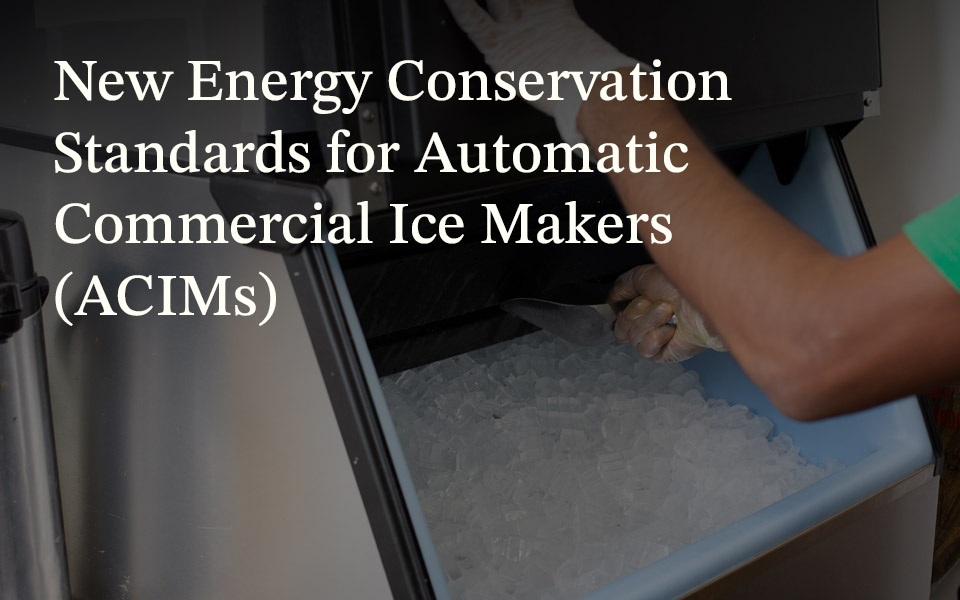Emerson was recently interviewed for an article in ACHR’s The News magazine, “EPA’s Proposed Changes to Section 608 Cause Concern in the Industry,” where we provided our perspective on the current state of leak detection, repair and other provisions.

Refrigerant leak response and repair regulations have placed our industry in uncertain waters. As you may know, the Environmental Protection Agency (EPA) has proposed a new rule that rescinds some provisions of its Section 608 mandate, affecting equipment with 50 lbs. or more of hydrofluorocarbons (HFCs) or other substitute refrigerants. These best practices were developed in consultation with the HVACR industry to ensure safety, establish proper reclaim and recycling processes, and of course, reduce carbon emissions.
In November 2016, the EPA extended the scope of Section 608 — from refrigerants containing ozone-depleting substances (ODS) to nonexempt substitute refrigerants such as HFCs. Because the Court of Appeals ruled in 2017 that the EPA could not ban HFCs, the agency has decided that it also did not have the authority to regulate these refrigerants under Section 608.
Establishing best practices
Awareness of the importance of leak detection has grown exponentially in recent years. Today, most companies understand that implementing a leak response and repair program is simply a best practice. And for those companies that have already taken steps to comply with Section 608, the vacating of this rule will have little impact.
As stated in the article: “These procedures not only benefit the environment but also help ensure HVACR equipment operates at peak efficiency, including at the lowest overall cost. One of the benefits of the existing regulations has been to raise the awareness of best practices related to HVACR maintenance. Increased awareness generally leads to broader adoption by those in the industry, regardless of whether regulations are in place.”
Simply put, leak detection and repair programs make good sense, regardless of the regulations in place or the type of refrigerant being used. However, with the reversal of Section 608, equipment operators will no longer be under federal mandate to follow these widely adopted refrigerant management best practices:
-
- Conducting leak rate calculations when refrigerant is added to an appliance
- Repairing an appliance that leaks above a threshold leak rate
- Conducting verification tests on repairs
- Conducting periodic leak inspections on appliances that exceed the threshold leak rate
- Reporting to the EPA about chronically leaking appliances
- Retrofitting or retiring appliances that are not repaired
- Maintaining related records
- Overseeing technicians’ use of certified equipment and the reclamation process
These procedures are already considered to be the optimal standard practice, and end users who are focused on operational excellence are likely doing many (or most) of them today.
Maintaining other key program elements
The absence of a federal mandate for responsible HFC management creates a quandary for our industry. Currently, the EPA is seeking comments about the remaining provisions of Section 608, raising concerns about the potential for overturning other benefits of programs — specifically, guidelines for refrigerant reclaim procedures and technician certification and training programs.
Proper refrigerant reclamation reduces the likelihood of introducing impurities, which could lead to premature failures and increased maintenance costs for owners of HVACR equipment. What’s more, the certification program provides the vital information on how to deal with the ever-growing number of refrigerants. As I stated in the article: “One benefit of certification is that wholesalers are able to sell refrigerants to technicians who have a sufficient background and understanding of their liability under the Clean Air Act.”
Path forward
Already, several states are adopting standards for leak detection and control. Again, as noted in the article, “We are already seeing some states such as California enact regulations that adopt many of the requirements in Section 608. Other states will likely step in, which may create more headaches for the industry. This could create problems for the industry and lead to a patchwork of inconsistent regulations that would be challenging for manufacturers and service providers to navigate.”
As always, Emerson will help you stay informed about further changes to Section 608. Regardless of the regulatory decisions, we’ll continue to provide guidance and expertise on how to design and implement refrigerant management programs.

Let the Refrigerant Phase-in Begin
Evaluating next-generation commercial refrigerant alternatives in established and emerging...

Reviewing Proposed Energy Efficiency Standards for Ice Machines
Earlier this year, the Department of Energy (DOE) published a notice of proposed rulemaking (NOPR)...

CO2 as a Refrigerant — Criteria for Choosing Refrigerants
This is post two of CO2 as a Refrigerant, a blog series covering the fundamental considerations...
